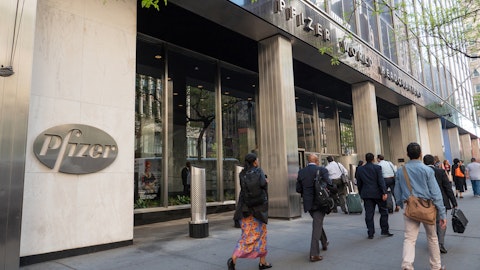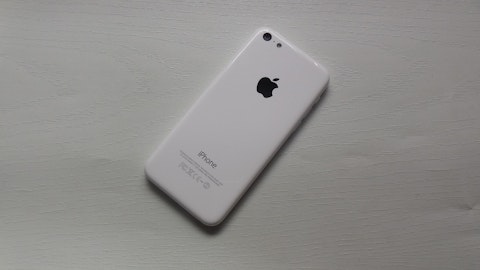Investors who prefer to invest in large, stable companies which are market leaders in their respective industries usually don’t need to look any further than the Dow Jones Industrial Average (DJIA) to select the right stocks for their portfolio. Since the DJIA comprises of 30 of the largest U.S. companies across industries (except transport and utilities), investing in these companies is considered the safest bet for long-term investors. In order to narrow down some of the best picks from the DJIA we decided to cross-reference the stocks with our data based on the equity portfolios of some 800 funds from our database. With this in mind, in this article, we are going to take a closer look at the five most popular DJIA stocks among the investors we follow.
We track prominent investors and hedge funds because our research has shown that historically their stock picks delivered superior risk-adjusted returns. This is especially true in the small-cap space. The 15 most popular small-cap stocks among a select group of investors delivered a monthly alpha of 80 basis points between 1999 and 2012 (see the details here).
#5 JPMorgan Chase & Co. (NYSE:JPM)
– Investors with Long Positions (as of December 31): 100
– Aggregate Value of Investors’ Holdings (as of December 31): $7.58 billion
Let’s begin with JPMorgan Chase & Co. (NYSE:JPM), whose shares are trading down by 9.5% year-to-date, but are still performing relatively well when compared to shares of other large banks. During the fourth quarter, the ownership of the bank among funds tracked by us remained constant, but the aggregate value of their holdings saw a marginal decline of 2.2%. Among the investors that raised their stakes in the bank during that time was billionaire Ken Fisher‘s Fisher Asset Management, which increased its holding by 2% to almost 14.0 million shares. On March 17, the company announced that it was adding $1.88 billion to its share repurchase program after authorizing $6.4 billion in buybacks last year. According to recent reports, shareholders of JPMorgan Chase & Co. (NYSE:JPM) and Citigroup Inc (NYSE:C) will get to vote on a potential breakup of the respective banks later this year.
Follow Jpmorgan Chase & Co (NYSE:JPM)
Follow Jpmorgan Chase & Co (NYSE:JPM)
Receive real-time insider trading and news alerts
#4 Visa Inc (NYSE:V)
– Investors with Long Positions (as of December 31): 29
– Aggregate Value of Investors’ Holdings (as of December 31): $9.39 billion
Amid a 11.3% rise in its stock during the fourth quarter, investors covered by us with long positions in Visa Inc (NYSE:V) inched down by one. However, the aggregate value of their holdings increased by $818 million. Billionaire Ken Griffin‘s Citadel Investment Group was one of the notable shareholders of the payment processing giant, which reduced its stake by 50% to 3.04 million shares between October and December. For its fiscal 2016 second quarter, analysts are expecting the company to report EPS of $0.67 on revenue of $3.60 billion, whereas for the same quarter of the previous financial year it reported EPS of $0.63 on revenue of $3.40 billion. On March 14, analysts at Deutsche Bank reiterated their ‘Buy’ rating and $87 price target on the stock.
Follow Visa Inc. (NYSE:V)
Follow Visa Inc. (NYSE:V)
Receive real-time insider trading and news alerts
#3 Pfizer Inc. (NYSE:PFE)
– Investors with Long Positions (as of December 31): 109
– Aggregate Value of Investors’ Holdings (as of December 31): $8.62 billion
Pfizer Inc. (NYSE:PFE)’s announcement in November that it would acquire Allergan plc Ordinary Shares (NYSE:AGN) for $160 billion boosted its popularity among the funds we track during the fourth quarter. In this way, the ownership of the company among investors tracked by us increased by 12 and the aggregate value of their positions jumped by $2.5 billion during that time. Billionaire Barry Rosenstein‘s JANA Partners was one of the notable shareholders that initiated a stake in the company during the October-December period and held almost 9.17 million shares of Pfizer heading into 2016. The 7% decline that shares of Pfizer Inc. (NYSE:PFE) have registered so far this year has boosted its annual dividend yield to almost 4%. On March 17, authorities in India banned the company’s highly popular cough syrup ‘Codex, which caused the stock of its Indian unit, Pfizer Limited, to lose around 7% during a single day. Though the Allergan-Pfizer merger faces a lot of regulatory hurdles currently, analysts believe that if it does get completed it will be hugely beneficial for Pfizer and its shareholders due to the synergies involved.
Follow Pfizer Inc (NYSE:PFE)
Follow Pfizer Inc (NYSE:PFE)
Receive real-time insider trading and news alerts
#2 Apple Inc. (NASDAQ:AAPL)
– Investors with Long Positions (as of December 31): 133
– Aggregate Value of Investors’ Holdings (as of December 31): $17.72 billion
Moving on, the number of investors tracked by us with long positions in Apple Inc. (NASDAQ:AAPL)’s stock remained the same during the fourth quarter and the aggregate value of their holdings in it also remained nearly unchanged. Though Carl Icahn‘s Icahn Capital LP reduced its stake in the company by 14% to 45.76 million shares during that period, it still remained Apple Inc. (NASDAQ:AAPL)’s largest shareholder among the funds we cover at the end of December. Apple’s stock is currently trading flat for 2016 thanks to the 10% rally it has had in the past month. On March 21, the company unveiled a new 4-inch phone, iPhone SE, priced at $399 and a new 9.7 iPad Pro priced at $599. After the launch of these products, some analysts and investors raised concerns that the SE will cannibalize the sales of the company premium iPhones. However, according to JP Morgan’s analyst Rod Hall, those concerns are unfounded. On March 22, Mr. Hall released a note to his clients in which he reiterated his ‘Buy’ rating on the stock and wrote, “Apple just opened up a substantial iPhone market opportunity and nobody seems to have noticed”.
#1 Microsoft Corporation (NASDAQ:MSFT)
– Investors with Long Positions (as of December 31): 140
– Aggregate Value of Investors’ Holdings (as of December 31): $23.42 billion
With its ownership among investors increasing by 27 and the aggregate value of their holdings surging by over $4 billion, Microsoft Corporation (NASDAQ:MSFT) emerged as the most popular Dow stock among the funds tracked by us heading into 2016. Shares of the Silicon Valley giant have inched down by nearly 4% so far this year, but are trading comfortably above $50 mark, which it surpassed for the first time last year. Though the company is currently trading at a rich valuation with a trailing P/E of 38.50, its still sports a respectable annual dividend yield of 2.66%. Most analysts who cover the stock are currently bullish on it largely due to the growth that the company’s cloud platform, Azure, has shown in the past couple of quarters. Some analysts also believe that Microsoft Corporation (NASDAQ:MSFT) is better positioned to capitalize on the cloud opportunity and will have better margins going forward since it only supplies cloud software and not the hardware like some of its peers. The 36 prominent analysts and research houses that cover the stock currently have an average rating of ‘Overweight’ and an average price target of $59.54 on it. James Crichton‘s Hitchwood Capital Management initiated a stake in Microsoft Corporation during the October-December period by purchasing 5 million shares of the company.
Follow Microsoft Corp (NASDAQ:MSFT)
Follow Microsoft Corp (NASDAQ:MSFT)
Receive real-time insider trading and news alerts
Disclosure: None





